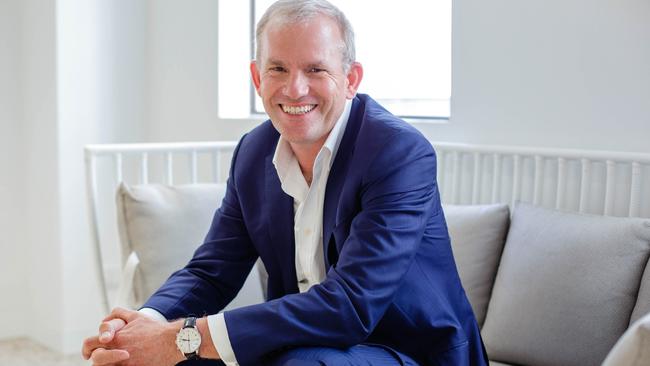Having a 2040 emission target means companies aren’t serious about decarbonisation
Companies targeting net zero emissions by 2040 are letting others do the heavy lifting, according to Fortescue chief Mark Hutchinson.
Companies that are targeting net zero emissions by 2040 or 2050 are not serious about decarbonisation and they are letting others do the heavy lifting, the chief executive of Fortescue Energy has said.
Nearly all listed Australian companies have set emission reduction targets as they come under mounting social and environmental pressure from shareholders, but Fortescue Energy chief executive Mark Hutchinson said less ambitious targets demonstrate that a company is unwilling to take meaningful action.
“If a company has a 2040, 2050 target, they’re saying it’s not my problem,” Mr Hutchinson told a Sydney business conference.
“It comes down to ‘do they have the will to really knuckle down and really get at this’, and I don’t think business has at the moment. I think we’ve got a long way to go.”
The comments underscore a deep divisions within corporate Australia about the pace of reducing emissions.
Fortescue is one of Australia’s most ambitious but others have been far more circumspect citing the need to balance emission reductions with shareholder returns.
Fortescue has pledged to reach net zero by 2030.
Australia’s resource industry has been particularly cautious as they move to capitalise on immediate demand for commodities such as gas and coal and drawing the ire of environmentalists.
But Mr Hutchinson said Fortescue’s action illustrates other companies cannot make excuses.
“If we can do it as a mining company, why can’t you?” Mr Hutchinson said.
Peter Coleman, chair of DIRECT Infrastructure and Allkem and former chief executive of Woodside Energy, however, said the companies are still finding their way and as he defended the progress and ambition of some of Australia’s largest firms.

“There aren’t many examples of companies that have done it well and moved away from what they are doing now. If I’m a world class juggler and now you want me to go learn how to high jump and do that as well as I juggle,” Mr Coleman said.
While companies are moving at different paces, Australia’s largest emitters are under regulatory pressure to curtail emissions.
Under the Safeguard Mechanism, Australia’s 215 largest emitters, that together cause 28 per cent of the country’s emissions, must decarbonise their operations or offset their emissions by purchasing carbon credits.
The scheme is the centrepiece of the Labor government’s plan to reduce emissions by 43 per cent by 2030 and reach net-zero emissions by 2050.
The target has heightened pressure on Australia’s coal generators which is still the dominant source of electricity, and many have announced accelerated plans to exit.
Australia has set ambitious targets of having renewable energy generate more than 80 per cent of electricity by the end of the decade, but it is struggling to build enough zero-emission sources quickly enough.
If Australia does not build enough renewable energy, electricity prices are likely to rise and the risk of blackouts will rise.
Australia could increase its use of gas to plug the gap, but the country’s east coast is facing a looming supply shortage as developers struggle to secure regulatory, social and legal authority to establish new supplies.
Pressure on Australia’s east coast market is expected to be exacerbated as supplies from traditional sources slow.
ExxonMobil – one of Australia’s largest producers of domestic gas – this year said its Gippsland Basin joint venture, which historically supplies more than 70 per cent of southeast Australia’s domestic gas demand, was rapidly dwindling.





To join the conversation, please log in. Don't have an account? Register
Join the conversation, you are commenting as Logout